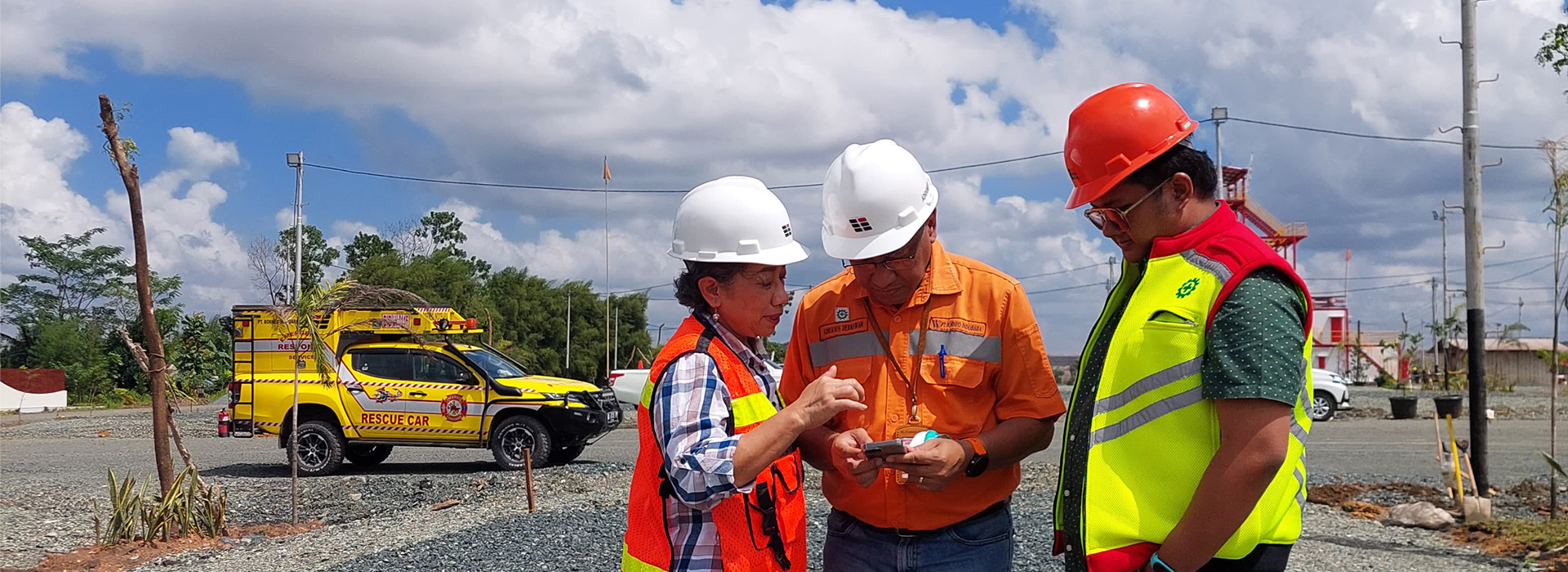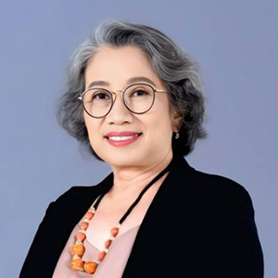Retno Nartani: Inspiring the next generation through thoughtful guidance and mentorship
Fuelled by curiosity and a passion for learning, Retno has launched herself into the male-dominated mining industry in Indonesia over three decades ago. Today, she is a fearless advocate of safety; and hopes to inspire the next generation through thoughtful guidance and mentorship.


Retno Nartani
Director, Health, Safety and Environment,
Golden Energy Mines
Q.
Mining was a gender-skewed industry when you first started your career. What prompted you to pursue a career in this field?
When I first considered a career in this industry, it was more the prospect of being outdoors that appealed to me, as I was not keen on being confined to a classroom or office all day. Later, however, one of my engineering lecturers pointed out that every day we are surrounded by the products of the mining industry. Houses, buildings, infrastructure – all these require mineral resources. That’s when I became inspired and convinced this was the career for me.
Q.
What are the key values that have guided your career journey?
I have always been curious and eager to understand the entire business process. Early in my career, I sought permission to learn from different departments. My supervisors appreciated this attitude, and my curiosity helped me broaden my perspective on both mining operations as well as business processes.
This broadened perspective and wider knowledge base also gave me the courage to express myself. Encouraged by my supervisors, I gained the confidence to speak up even in difficult situations. This is a valuable trait in workplace health and safety, and is particularly important for leaders who oversee this aspect of operations.
For safety to remain at the core of every operation, it is necessary to be firm and to speak up.
“As a leader, the goal is not to win a popularity contest. A leader thinks not for herself, but for others and for her organisation.”
– Retno Nartani, Director, Health, Safety and Environment, Golden Energy Mines
Q.
Tell us of a time when you prioritised safety in a business operation.
In our industry, contractors constantly face strong pressure to keep projects on schedule to maintain profitability.
On a site visit in Kalimantan, Indonesia, I observed that the roads were in poor shape and were a safety risk. I immediately called for a pause in operations.
Naturally, the contractors were unhappy about the downtime; but I refused to compromise on safety and insisted that they fix the roads before resuming operations. They eventually complied, and work resumed soon after. In fact, the downtime was less than they had projected it would be.
Q.
How has technology played a key role in safety and operations in mining? Are there innovations that have significantly improved workplace safety?
Technology has significantly enhanced safety monitoring. For example, cameras in truck cabins now detect operator fatigue by tracking eyelid movement and head nodding. If an operator appears sleepy, an alarm sounds in the cabin and the command centre is immediately notified of the potential safety risk.
Similarly, digital environmental monitoring tools play a vital role in preserving biodiversity in operational areas. Special digital tags help track tree growth, while remote cameras allow us to observe native wildlife. These tasks are difficult to do physically, but technology has made them much easier.
As technology advances, however, we must ensure it does not diminish the value of human interaction. Many younger employees now prefer communicating through text messages or emails rather than face-to-face conversations, making it more challenging to build strong interpersonal connections.
Despite technological advancements, human interaction remains essential – especially because safety is partially a product of corporate culture and values. Leaders must be present and actively engaged with their teams, rather than relying solely on digital communication. Strong interpersonal relationships, best nurtured through face-to-face interactions, will remain crucial in our operations.
Q.
What methods you have found effective in building strong relationships with your teams?
Despite my title, I do not position myself as an authoritative figure during site visits. On the contrary, I interact with employees and colleagues as a peer or even a mother figure. When I visit worksites, I like to engage with workers informally. Often, this is over meals. At times, I even cook for them. I believe this helps build trust and makes them feel comfortable. When they feel safe, they openly share safety concerns that they might not express through more formal channels.
I also see great opportunities for learning on the job and gaining onsite experience to build the understanding of my team. In fact, I send my team members to mining sites for extended periods so they can experience business processes firsthand.
Q.
What advice do you have for someone of the younger generation joining the workforce today?
Be curious and learn more about your industry. Those joining the workforce in recent years, or that will be joining the workforce soon, spend a lot of time on social media. But social media doesn’t feed you enough information that is useful for your career. I encourage my team to look for resources and be diligent in their reading.
Also, look for a mentor. Throughout my career, I have benefited immensely from mentoring. Early in my career, I had a supervisor who regularly took the time out of his schedule to mentor me. In fact, it was an established practice in my organisation that supervisors would regularly prepare those under their charge for their next role. Today, I see many leaders spending less time mentoring their subordinates. This makes it more challenging to develop a deep understanding of the industry.